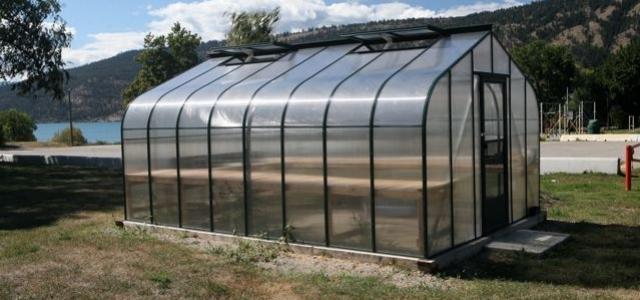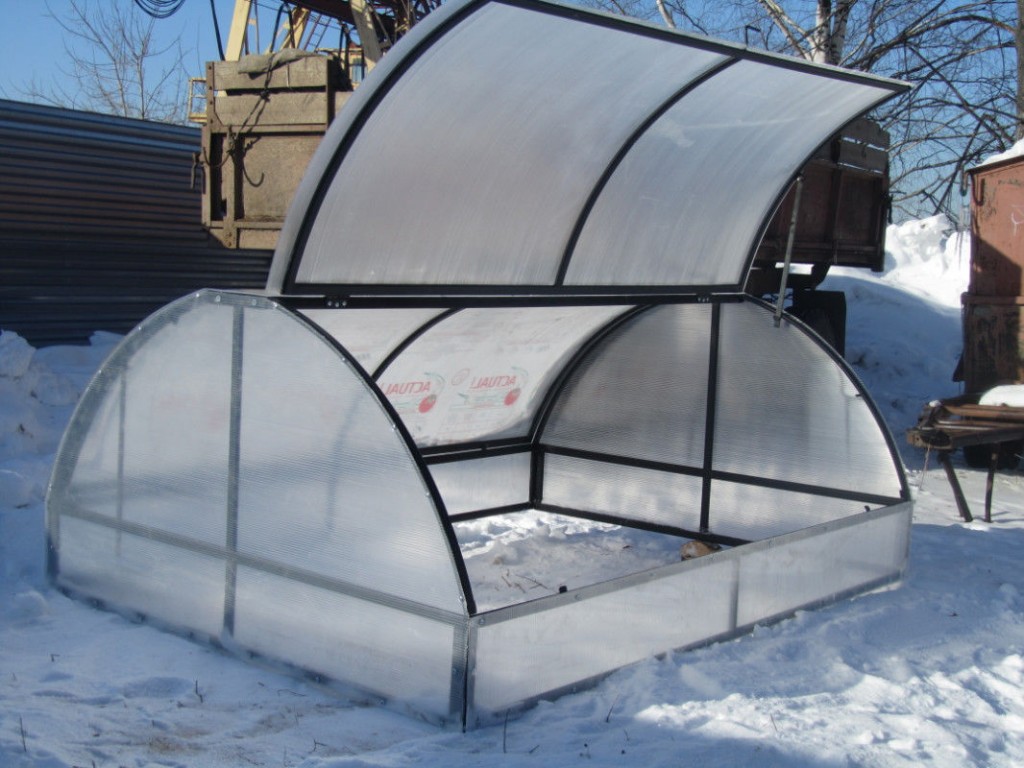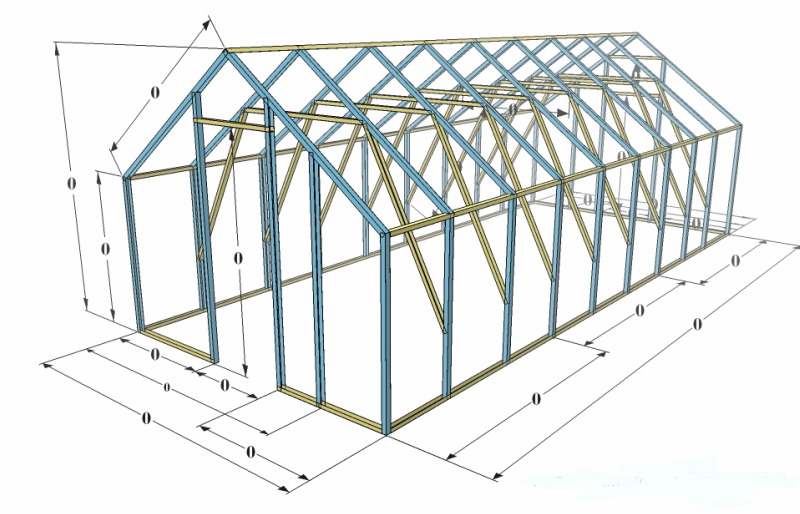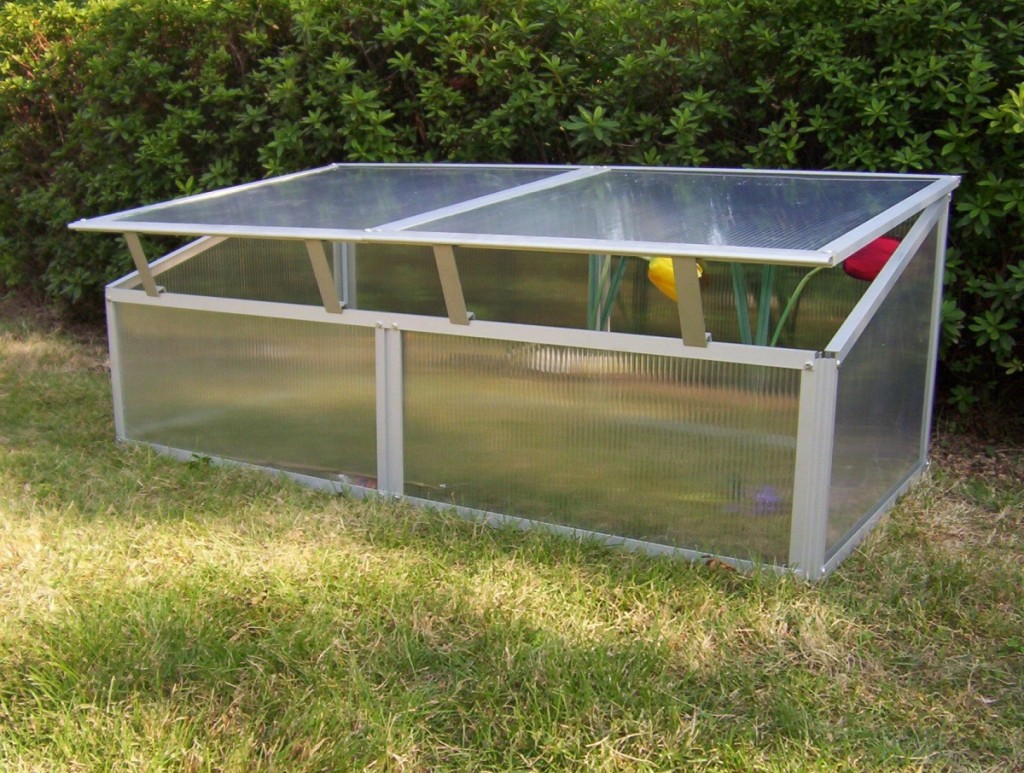How to make a polycarbonate greenhouse with your own hands
Content
What is different from a greenhouse
Of course, a greenhouse and a greenhouse are very different from each other, primarily in purpose, and therefore to everyone else:
- structures;
- materials;
- equipment;
- even the way you work in them.
They say that greenhouses appeared before greenhouses. They came up with them for growing seedlings. Since their inception, as now, they use the heat of the sun from above and the heat from the decomposition of manure from below, they are not satisfied with artificial heating. Although some owners may turn on electric heaters in particularly severe frosts, these can be small simple structures with a height of 50 cm to 130 cm, working in them, the person is usually outside. There are no doors, if necessary, remove the top or side of the greenhouse, and then put it in place. These mini constructions can be both stationary and portable. Portable ones are used to shelter newly planted seedlings from a short cold snap. It is not difficult to make them with your own hands.
Greenhouses evolved from greenhouses in which exotic plants were grown. In greenhouses, seedlings can be grown all year round. These are serious stationary structures with artificial heating, where the plant can not only germinate, but also bear ripe fruits. They are about 2 m high so that a person can enter and work calmly. But there are much more if they are designed for the work of technology. At dachas, mini greenhouses are used, sometimes even without heating. They are bought ready-made or made by hand for long-term plant maintenance.
Preparing a place for a greenhouse
Before you start making a greenhouse, you need to choose the right place for it. The greenhouse should not be in the shade, in a draft, on a slope or in a swampy area. Having looked after a flat open place for him, we will plan the location. In length, it should be located from east to west, so that one side completely faces south. 
This way, the plants will receive more light and warmth in the non-shaded area. Now you need to prepare the potting mix. There are several of the most common composition options.
- for 1 part of ordinary garden land, take 2 parts of humus, 1 part of sand, 5 parts of peat land and 3 parts of lime;
- 3 parts of peat soil, 5 parts of sawdust, 1 part of ash, 1 part of chopped straw. Before planting the plants, add (per 1 sq. M) 30 g of superphosphate and 20 g of potassium sulfate;
- 2 parts of already decomposed peat, 1 part of horse manure, 1 part of chopped straw. Here, before planting plants, add 30 g of urea, 2 kg of potassium chloride and 3 kg of superphosphate (per 1 cubic meter).
Cucumbers, tomatoes, cabbage or ornamental plants are grown on this soil. Manure is used as fuel in greenhouses, horse manure is best suited. If, after all, the place is wet, you need to make a water drainage system with your own hands. According to the method of installation, greenhouses are deepened and aboveground.Any of them can be done by hand, you just need to prepare well and think over everything.
Aboveground greenhouses are usually lightweight mobile structures that can be carried, assembled and disassembled as needed. These mini greenhouses have one drawback: they are not buried in the ground, so they keep heat worse. They are called "French", designs are varied in shape and number of light-transmitting frames. You can buy ready-made factory overground greenhouses, or you can use homemade ones.
A deep greenhouse is good because a thick layer of soil acts as a heat insulator. It is easy to make it, you need to dig a trench and install logs or brickwork around the perimeter. The outer frame of the structure will then be attached to them. A pitched in-depth greenhouse is called "Russian"; any summer resident can easily make it with his own hands. Such a greenhouse is heated by the heat that is released during the decomposition of biomass. Manure is usually used as biofuel, you can take any, but horse manure is preferable. Therefore, even on a cloudy day in the absence of the sun, the plants are not threatened with cold.
First you need to dig a trapezoidal pit with your own hands. Its depth can vary from 30 cm to 80 cm - the colder the spring, the deeper the pit. It is desirable to strengthen its walls with boards. At the bottom, now you need to pour manure in such a thick layer that only 20 cm is left on top for the soil. Now we need to fill up the soil on top, and make a crown, best of all from logs. A greenhouse frame will be installed on it.
Video "Making a greenhouse yourself"
Making a drawing
Today, the most popular for summer cottages is a polycarbonate greenhouse. It is made of two components: a light metal frame and cellular polycarbonate. Before starting work, you need to make a drawing, taking into account all dimensions, so that during assembly everything exactly coincides and docks. It might look something like this if you stick with a lean-to form.
You yourself must decide on the size. The optimal width of a deep greenhouse is one and a half meters. If you do less, there will be not enough manure for heat, if more, it will be inconvenient to process. It all depends on the expected temperature; in case of light frosts, you can make a mini greenhouse 1 m wide.
How to build a frame
The simplest option is called an arched roof. She will need beams 50 mm thick. Of these, you need to make 2 slats equal to the length of the greenhouse. Polycarbonate will be attached to them.
A single-slope polycarbonate greenhouse is also easy to make with your own hands, but the frame will have to be welded, guided by the drawing.
You can make a frame structure from water-supply metal-plastic pipes. They bend conveniently, so they need to be bent in a semicircle, connected with several pipes in length and, sheathed with polycarbonate, make an arched roof for a greenhouse. If it is large, and not a mini greenhouse, it will be difficult to make opening doors.
We install the greenhouse itself
Now you need to fix the polycarbonate to the frame. It is very important that the side with the light protection film is on the outside. A standard sheet has the following dimensions: 210 cm by 6 m. For our mini design, one sheet will be enough. We cut it with a construction knife into 4 pieces with a width of 90 cm and 3 x 170 cm. We put the wide side (with a size of 210 cm) along the bar and fix them with screws overlapping. The edge of the top sheet must be glued with tape. Now it remains to bend this entire structure with an arch. To do this, take a beam with a thickness of 50 mm and a length that corresponds to the width of the greenhouse from your drawing (up to 150 cm), and nail it firmly to one of the frame beams.
Now we will bend the canvas with an arc and just as firmly nail it to the second beam of the frame. On the opposite side, do the same. Now these end faces need to be closed. For this, a sheet with a width of 90 cm is suitable.It must be attached to the end of the arched structure, mark the desired size with a marker, cut and attach to the timber, thereby closing the hole. Now the resulting cover needs to be installed on the crown - and the polycarbonate greenhouse has already been made by hand. And to work in a greenhouse, the lid will just need to be removed.
Video "DIY polycarbonate greenhouse"
This video contains detailed instructions that will allow you to understand how to properly and effectively build a greenhouse on your site.




